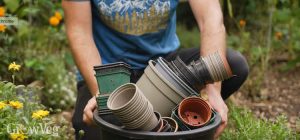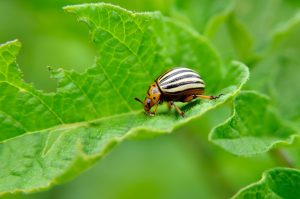Creating organic soil is essential for a thriving garden. This beginner-friendly guide will walk you through everything—from understanding soil basics to building rich, fertile earth using natural methods. Your plants will thank you!
What Is Organic Soil and Why Does It Matter for a Healthy Garden?
Organic soil is made from decomposed plant and animal material. It’s full of life and nutrients that help plants grow strong and healthy. It also improves water retention, supports beneficial microbes, and reduces the need for chemical fertilizers—making it better for you and the environment.
How to Identify Healthy Soil: Texture, Color, and Life Indicators
Healthy soil contains a balanced mix of minerals, water, air, organic matter, and living organisms. Look for:
- Dark color (rich in organic matter)
- Crumbly texture (like chocolate cake)
- Presence of worms or bugs (sign of active microbial life)
- Ideal soil structure: Loam—40% sand, 40% silt, and 20% clay
👉 Loam soil (a balance of sand, silt, and clay) is ideal for most gardens. Learn how to make loam soil easily at home for better drainage and fertility.
Why Choose Organic Soil: Key Benefits for Your Plants and the Planet
Using organic soil provides several long-term benefits:
- Steady nutrient release for continuous plant growth
- Improved aeration and drainage, especially in heavy soils
- Better moisture retention, so less watering is needed
- Thriving microbial life, which boosts soil and plant health
No harmful chemicals, reducing pollution and protecting pollinators

Essential Ingredients You Need to Make Nutrient-Rich Organic Soil
To build high-quality organic soil, include:
- Compost: Made from food scraps, grass clippings, and leaves
- Aged manure: Nutrient-rich but must be well-composted to avoid harming plants
- Natural amendments: Peat moss, perlite, vermiculite, or coconut coir improve structure and drainage
How to Build Organic Matter That Boosts Soil Fertility Naturally
Organic matter feeds soil life and helps plants absorb water and nutrients. Here’s how to build it up:
- Add compost regularly to boost microbial life
- Use materials like banana peels, coffee grounds, dead leaves, aged manure, and worm castings
đź’ˇ Additional Tip:
Worm castings from vermicomposting add beneficial microbes and nutrients, naturally enhancing soil fertility.
Simple Steps to Make Organic Soil at Home Using Common Materials
- Collect Organic Materials: Gather green (nitrogen-rich) and brown (carbon-rich) matter like food scraps and dry leaves
- Layer the Materials: In a compost bin or open pile, alternate green and brown layers
- Keep It Moist and Aerated: Like a wrung-out sponge; turn the pile regularly
- Monitor Decomposition: In weeks to months, the material becomes dark, crumbly soil
How to Test Soil for pH, Nutrient Levels, and Texture at Home
Testing your soil helps you make informed improvements. Here’s how:
- pH test kits show if your soil is too acidic or alkaline
- Jar test (mix soil with water in a jar) reveals sand/silt/clay content
- Professional labs provide detailed nutrient breakdown—test in spring or fall for accuracy
🔬 For detailed steps, check out this guide on how to test soil nutrients at home to understand your soil’s health and fertility.
Natural Ways to Adjust Soil pH for Better Plant Growth
Soil pH affects nutrient availability. Here’s how to fix common issues:
- Acidic soil (pH < 6.5): Add lime or wood ash to raise pH
- Alkaline soil (pH > 6.8): Add sulfur, peat moss, or acidic compost to lower pH
- Ideal range for most plants: 6.5–6.8
:strip_icc()/organic-garden-soil-planting-c110b36c1-d084816c37a14af7a9f2ddffa7ec00d8.jpg)
Mistakes to Avoid When Creating Organic Soil at Home
Avoid these common errors to keep your soil healthy:
- Using fresh manure: Can burn plants and spread pathogens
- Adding too much of one ingredient: Balance green and brown materials
- Skipping pH testing: Unbalanced pH can block nutrients, even in good soil
How to Improve Different Soil Types Using Only Natural Materials
Each soil type has its own challenges. Here’s how to fix them organically:
- Sandy Soil: Add compost and mulch to improve water and nutrient holding
- Clay Soil: Use gypsum and compost to loosen the structure
- Silty Soil: Avoid tilling; use raised beds and compost to boost drainage
Smart Tips for Using Soil Amendments to Enhance Your Garden’s Success
Soil amendments improve texture, pH, and nutrition. Use them wisely:
- Gypsum: Breaks up clay—don’t use sand
- Crushed limestone: Raises pH in acidic soil
- Sulfur or peat moss: Lowers pH in alkaline soil
- Seaweed or kelp: Adds trace minerals and plant hormones
🌱 Pro Tip:
Try Bokashi composting—it ferments waste (even meat and dairy), breaking it down faster and with less odor.
How to Follow Ecological Gardening Practices That Support Soil Health Long-Term
Emulate natural ecosystems for healthier soil:
- Fields = bacteria-rich; forests = fungi-rich—match your approach to your garden type
- Use mulch, compost, and root diversity instead of tilling
- Let plants decompose in place
🌿 Smart Addition:
Use chop-and-drop with plants like comfrey—cut and let them decompose as mulch right where they grow.
Watch our video ‘How to Create Organic Soil’ and learn to make better soil. Help your plants grow strong and healthy!
Environmental Benefits of Organic Soil That Go Beyond Your Garden
Building organic soil isn’t just good for your plants—it’s good for the planet:
- Reduces chemical runoff into waterways
- Stores carbon, helping slow climate change
- Supports biodiversity by creating a home for soil organisms, insects, and fungi
Should You Make Organic Soil at Home or Buy It Pre-Made?
Making Organic Soil:
- Pros: Cheap, customizable, eco-friendly
- Cons: Requires time, effort, and space
Buying Organic Soil:
- Pros: Fast and easy
- Cons: Expensive, may contain fillers or non-organic material
How to Use Raised Beds and Custom Soil Mixes for Better Garden Results
Raised beds help you control soil quality and avoid compaction. Try this mix:
- 50% topsoil
- 30% compost
- 20% organic matter (like coconut coir or peat moss)
Top dress your beds with compost or mulch every year for long-term fertility.
Easy Methods to Maintain and Observe Soil Health All Year Round
Track and improve soil over time:
- Use a checklist for composting, amending, and cover cropping
- Look at soil color, structure, and smell regularly
- Keep soil covered year-round with mulch or crops to protect microbes
🍂 Bonus Method:
Try lasagna gardening—layer cardboard, compost, and leaves right on top of grass or soil to create new beds in place.
Why Supporting Soil Life Is the Key to a Thriving Organic Garden
Soil organisms—like worms, fungi, and microbes—are the real heroes of healthy soil:
- They break down nutrients and feed plants
- Moisture and oxygen are critical—cover soil to protect them
- Animals like chickens can help fertilize soil naturally while reducing pests
How Organic Amendments Help Improve Soil Naturally (Dr. Linda Cooperband’s Study)
Dr. Linda Cooperband, a soil expert from the University of Wisconsin, explains how using organic amendments (natural materials like compost and manure) can make soil healthier.
In her research, she found that:
- Organic materials help feed soil microbes, which protect plants from disease.
- These materials increase soil organic matter, which improves water holding and nutrient storage.
- Good soil life can stop bad germs in the soil, helping plants grow stronger without chemicals.
This is helpful for gardeners and farmers who want better soil without using harmful products.
đź”— Read the full guide by Dr. Linda Cooperband (PDF)
FAQs About Creating Organic Soil
Q: How long does it take to make organic soil?
A: Anywhere from a few weeks to several months, depending on your compost method and climate.
Q: Can I add kitchen scraps to my compost?
A: Yes! Use fruit peels, veggie scraps, eggshells, and coffee grounds—avoid oily or processed foods.
Q: Do I need to turn the compost pile?
A: Yes, turning adds oxygen and speeds up decomposition while preventing bad smells.
Q: Can I compost weeds?
A: Only if they haven’t gone to seed. Invasive weeds can regrow from compost if not fully decomposed.
Q: How do I know when compost is ready?
A: It’ll be dark, crumbly, and smell earthy—like fresh forest soil.
Final Thought
Creating your own organic soil is a rewarding process that improves your garden’s health and your connection to nature. Start small, stay consistent, and enjoy watching your plants flourish in the rich, living soil you’ve built with care.
Happy gardening!





